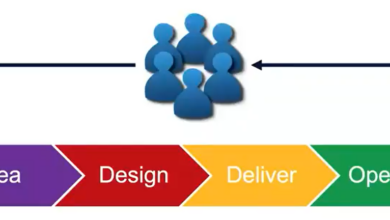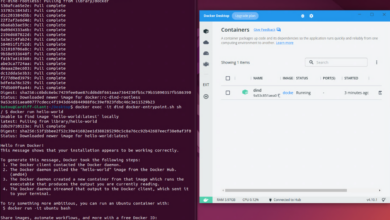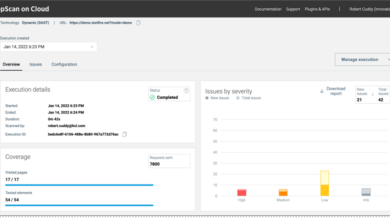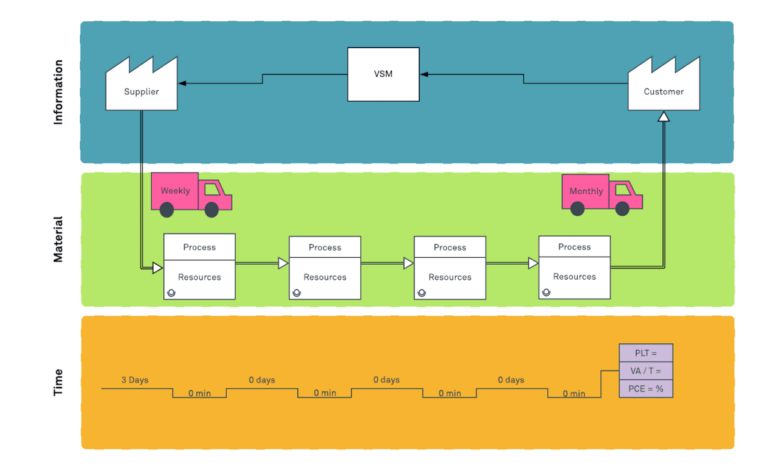
The Future of Software Delivery Value Stream Management
The future of software delivery value stream management is bright, brimming with potential to revolutionize how we build and deploy software. Forget slow, clunky processes; imagine a streamlined, efficient system where value flows seamlessly from idea to customer. This isn’t just about speed; it’s about quality, predictability, and ultimately, happier customers and developers. We’re diving deep into the exciting trends, challenges, and opportunities that lie ahead in this transformative field.
This post explores the core principles of Value Stream Management (VSM), examining how emerging technologies like AI and automation are shaping its future. We’ll unpack the challenges of implementation, the impact on business outcomes, and finally, peek into the crystal ball to predict where VSM is headed in the next five years. Get ready for a journey into the heart of modern software delivery!
Defining Value Stream Management (VSM) in Software Delivery
Value Stream Management (VSM) in software delivery is all about optimizing the entire process of getting software from ideation to production and beyond. It’s not just about individual teams or stages; it’s about seeing the whole picture and identifying bottlenecks and inefficiencies across the entire value stream. The goal is to deliver value to the customer faster, more reliably, and with higher quality.Value Stream Management Core Principles in Software DevelopmentVSM in software hinges on a few core principles.
First, it emphasizes a holistic view of the software delivery process, encompassing everything from planning and coding to testing, deployment, and monitoring. Second, it relies heavily on data-driven decision-making, using metrics to identify areas for improvement. Third, it promotes collaboration and communication across all teams involved in the delivery process. Finally, it focuses on continuous improvement, constantly seeking ways to optimize the flow of work and reduce waste.
Key Metrics for Measuring VSM Effectiveness
Several key metrics are crucial for evaluating the effectiveness of a VSM approach. Lead time, the time it takes for a change to move from ideation to production, is a critical indicator of speed. Throughput, the rate at which value is delivered, measures efficiency. Cycle time, the time it takes to complete a single piece of work, helps identify bottlenecks.
Deployment frequency, the number of deployments per unit of time, reflects the agility of the process. Mean Time To Recovery (MTTR), the average time it takes to restore service after an outage, showcases system reliability. Finally, change failure rate, the percentage of changes that result in failures, is a measure of quality. Tracking these metrics provides a clear picture of the overall health and efficiency of the software delivery value stream.
VSM Implementations Across Different Methodologies
VSM can be adapted to various software development methodologies. In Agile, VSM focuses on optimizing the flow of work within sprints, using Kanban boards or similar visual tools to track progress and identify bottlenecks. In Waterfall, VSM can help identify and reduce handoffs between phases, improving communication and reducing delays. In DevOps, VSM emphasizes automation and continuous integration/continuous delivery (CI/CD) to accelerate the delivery pipeline and increase deployment frequency.
For example, a company using Agile might use a Kanban board to visualize the workflow and identify bottlenecks, while a DevOps team might use automated testing and deployment pipelines to reduce cycle time and improve throughput. A Waterfall project might employ Gantt charts and detailed process maps to identify and streamline handoffs between phases.
Hypothetical VSM Framework for a Software Project
Let’s consider a hypothetical project to develop a new mobile banking application. This framework will incorporate key components and workflows.The project’s VSM framework would begin with a clear definition of value, focusing on features that directly benefit users, such as easy account access, secure transactions, and intuitive navigation. This would guide prioritization and feature development. The workflow would involve stages: requirements gathering, design, development, testing, deployment, and monitoring.
Each stage would have clear owners and defined metrics to track progress and identify bottlenecks. A Kanban board would visualize the workflow, enabling teams to track progress and identify issues. Automated testing and continuous integration/continuous delivery (CI/CD) would be implemented to accelerate the delivery pipeline. Regular reviews and retrospectives would ensure continuous improvement. Key metrics such as lead time, cycle time, deployment frequency, and change failure rate would be tracked and analyzed to identify areas for optimization.
The entire process would be supported by a centralized dashboard providing real-time visibility into the value stream. This framework allows for agile adaptation and continuous improvement throughout the project lifecycle.
Emerging Trends Shaping the Future of Software Delivery VSM: The Future Of Software Delivery Value Stream Management

The landscape of software delivery is rapidly evolving, driven by technological advancements and a growing demand for faster, more efficient, and higher-quality software releases. Value Stream Management (VSM) is at the forefront of this transformation, adapting and incorporating new strategies to meet these evolving needs. This section explores key trends shaping the future of software delivery VSM.
Technological Advancements Impacting VSM, The future of software delivery value stream management
Three significant technological advancements are profoundly impacting VSM in software delivery: the rise of cloud-native architectures, the increasing sophistication of AI and machine learning, and the expansion of automation capabilities. These advancements are not isolated but interconnected, creating synergistic effects that dramatically improve the efficiency and effectiveness of software delivery.
The Influence of AI and Machine Learning on Optimizing VSM Processes
AI and machine learning are revolutionizing VSM by providing predictive analytics and automated insights. For example, machine learning algorithms can analyze historical data from various stages of the software delivery pipeline (e.g., code commits, build times, test results, deployment frequency) to identify bottlenecks and predict potential issues. This predictive capability allows teams to proactively address problems before they impact delivery timelines or quality.
Furthermore, AI-powered tools can automate tasks such as resource allocation, risk assessment, and anomaly detection, freeing up human teams to focus on higher-value activities. Consider a scenario where an AI system detects a recurring pattern of slow test execution times linked to a specific code module. This allows developers to address the root cause proactively, preventing future delays.
The Role of Automation in Streamlining VSM Workflows and Reducing Bottlenecks
Automation is crucial for streamlining VSM workflows and eliminating bottlenecks. By automating repetitive tasks such as code deployments, infrastructure provisioning, and testing, organizations can significantly reduce lead times and improve the overall efficiency of their software delivery processes. This automation extends beyond simple scripting; it involves integrating various tools and platforms within the VSM ecosystem to create a seamless, automated workflow.
For instance, a fully automated pipeline might trigger automated testing upon code commit, automatically deploy successful builds to staging environments, and then, after successful staging tests, automatically deploy to production. This eliminates manual handoffs and reduces the risk of human error.
Comparison of Traditional VSM and Emerging Cloud-Native VSM Strategies
Traditional VSM approaches often rely on on-premise infrastructure and tools, leading to limitations in scalability and agility. In contrast, cloud-native VSM strategies leverage cloud-based platforms and tools, enabling greater flexibility, scalability, and faster deployment cycles. Cloud-native VSM also fosters better collaboration through shared access to data and tools across geographically dispersed teams. However, traditional approaches might offer greater control over security and data governance in certain sensitive contexts.
The choice between traditional and cloud-native strategies depends on an organization’s specific needs, infrastructure, and risk tolerance.
Advantages and Disadvantages of Different VSM Tools
The market offers a variety of VSM tools, each with its strengths and weaknesses. The following table provides a comparison:
| Tool | Advantages | Disadvantages | Best Suited For |
|---|---|---|---|
| Tool A (Example: a hypothetical tool focused on visualization) | Excellent visualization capabilities, easy-to-use interface | Limited integration capabilities, may lack advanced analytics | Smaller teams focused on visualizing workflow |
| Tool B (Example: a hypothetical tool focused on automation) | Strong automation capabilities, robust integrations | Steeper learning curve, may be expensive | Larger organizations with complex workflows |
| Tool C (Example: a hypothetical tool focused on AI-driven insights) | Advanced AI-powered analytics, predictive capabilities | Requires significant data input, may be complex to implement | Organizations prioritizing predictive analysis and proactive issue resolution |
| Tool D (Example: a hypothetical open-source tool) | Cost-effective, highly customizable | Requires significant technical expertise to implement and maintain | Organizations with strong in-house technical capabilities |
Challenges and Opportunities in Implementing VSM
Implementing Value Stream Management (VSM) in software delivery promises significant improvements in efficiency and speed, but the journey isn’t always smooth. Organizations often face substantial hurdles, requiring careful planning and a proactive approach to overcome resistance and ensure successful adoption. This section will explore these challenges and highlight strategies for navigating them.
Common Obstacles to VSM Implementation
Successfully implementing VSM requires a holistic view of the software delivery process, identifying bottlenecks and areas for improvement. However, several common obstacles frequently hinder progress. These obstacles often stem from a lack of understanding, inadequate resources, or resistance to change within the organization.
- Lack of Visibility: Many organizations lack a comprehensive understanding of their current software delivery process. Without clear visibility into each stage, identifying bottlenecks and areas for improvement is difficult. This often results in a fragmented view of the value stream, hindering effective optimization efforts.
- Data Silos and Lack of Integration: Data related to software delivery is often scattered across different teams and systems. The absence of a unified data platform makes it challenging to gain a holistic view of the value stream and track key performance indicators effectively.
- Resistance to Change: Implementing VSM requires significant changes in processes, tools, and mindsets. Resistance from teams accustomed to traditional ways of working can significantly impede progress. This resistance can manifest as skepticism, lack of buy-in, and unwillingness to adopt new practices.
- Lack of Resources and Skills: Successful VSM implementation demands investment in new tools, training, and potentially new roles within the organization. A lack of sufficient resources can limit the effectiveness of VSM initiatives.
- Inadequate Leadership Support: VSM implementation requires strong leadership support to drive change, allocate resources, and ensure buy-in across different teams. Without executive sponsorship, initiatives often stall due to a lack of prioritization and funding.
Strategies for Overcoming Resistance to Change
Addressing resistance to change is crucial for successful VSM adoption. A multi-pronged approach, combining communication, training, and incentives, is often necessary.
- Clearly Communicate the Benefits: Highlight the tangible benefits of VSM, such as reduced lead times, improved quality, and increased customer satisfaction. Use data and real-world examples to demonstrate the potential ROI of VSM implementation.
- Involve Teams Early and Often: Engage teams in the VSM implementation process from the outset. Solicit their input, address their concerns, and ensure they feel ownership of the initiative. This fosters buy-in and reduces resistance.
- Provide Comprehensive Training: Offer comprehensive training on VSM principles, practices, and tools. Ensure that teams understand how VSM can benefit them and are equipped with the skills to implement it effectively.
- Celebrate Successes and Recognize Contributions: Acknowledge and celebrate early wins to build momentum and reinforce positive behavior. Recognize individual and team contributions to motivate continued engagement.
- Start Small and Iterate: Begin with a pilot project focusing on a specific part of the value stream. This allows for iterative improvements and demonstrates the value of VSM before scaling it across the entire organization. Learning from early successes and failures allows for continuous adaptation and improvement.
Key Performance Indicators (KPIs) for VSM Success
Tracking relevant KPIs is essential for monitoring progress and demonstrating the value of VSM implementation. These metrics provide insights into the effectiveness of VSM initiatives and identify areas for further improvement.
- Lead Time: The total time it takes to deliver a software feature or product from inception to deployment.
- Cycle Time: The time it takes to complete a single step in the software delivery process.
- Deployment Frequency: The number of times software is deployed to production in a given period.
- Mean Time to Recovery (MTTR): The average time it takes to recover from a software failure.
- Change Failure Rate: The percentage of deployments that result in failures.
The Importance of Organizational Culture and Collaboration
Successful VSM implementation hinges on a culture of collaboration and continuous improvement. Breaking down silos and fostering communication between teams is critical for optimizing the value stream.
A collaborative culture, where teams readily share information and work together to identify and resolve bottlenecks, is essential for maximizing the benefits of VSM.
Step-by-Step Guide for Integrating VSM into an Existing Software Development Lifecycle
Integrating VSM into an existing software development lifecycle requires a phased approach.
- Map the Current Value Stream: Begin by mapping the current software delivery process, identifying all steps involved and the time spent in each stage. This provides a baseline for improvement.
- Identify Bottlenecks and Areas for Improvement: Analyze the value stream map to identify bottlenecks and areas where improvements can be made. Focus on reducing waste and optimizing workflows.
- Develop a VSM Implementation Plan: Create a detailed plan outlining the steps involved in implementing VSM, including timelines, resources, and responsibilities.
- Implement Changes Iteratively: Implement changes iteratively, starting with small, manageable improvements. Monitor progress and make adjustments as needed.
- Continuously Monitor and Improve: Regularly monitor KPIs and make adjustments to the value stream as needed. Continuous improvement is essential for maximizing the benefits of VSM.
The Impact of VSM on Business Outcomes
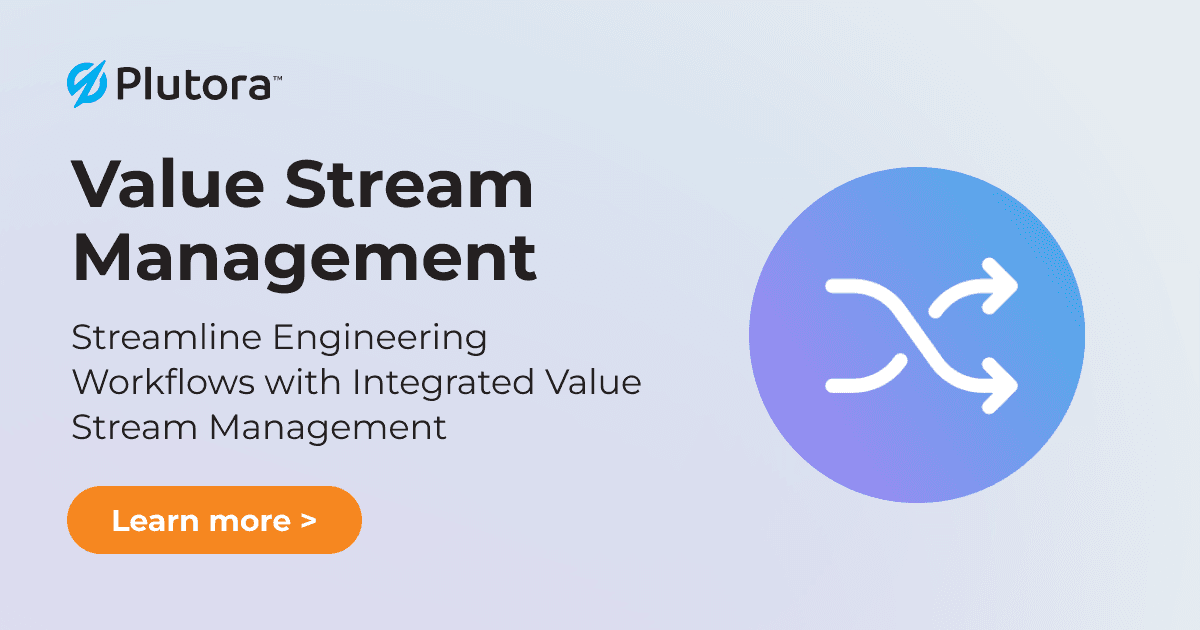
Value Stream Management (VSM) isn’t just a buzzword; it’s a transformative approach that directly impacts a company’s bottom line. By optimizing the entire software delivery process, VSM delivers tangible benefits across various business areas, from faster product releases to improved employee satisfaction. Let’s delve into the specifics.
Faster Time-to-Market
Implementing VSM significantly accelerates the software delivery lifecycle. By identifying and eliminating bottlenecks, streamlining workflows, and automating repetitive tasks, teams can release products and features much faster. For example, a company using a traditional waterfall approach might take months to release a new feature, while a VSM-optimized team might achieve the same result in weeks. This speed advantage translates directly into capturing market share, responding quickly to customer needs, and outpacing competitors.
The reduction in lead time is achieved through a combination of improved collaboration, automated testing, and continuous delivery pipelines.
Improved Software Quality
VSM’s focus on continuous improvement and feedback loops inherently leads to higher software quality. By visualizing the entire value stream, teams can pinpoint areas prone to defects and implement proactive measures to address them. Automated testing and continuous integration are integral parts of a VSM approach, catching bugs early in the development cycle and reducing the cost of fixing them later.
The result is a more reliable and robust product, reducing customer frustration and support costs.
Enhanced Customer Satisfaction and Reduced Operational Costs
Faster time-to-market and improved software quality directly translate to increased customer satisfaction. Customers receive features and updates more quickly, and the software itself is more reliable and user-friendly. Furthermore, VSM’s emphasis on efficiency reduces operational costs. By streamlining processes and automating tasks, companies can reduce wasted effort and resources, leading to significant cost savings in the long run. For instance, reducing the number of defects means less time spent on debugging and support, directly impacting the operational budget.
Impact on Employee Morale and Productivity
VSM empowers development teams by providing them with greater visibility and control over the software delivery process. By clearly identifying bottlenecks and areas for improvement, teams can focus their efforts on the most impactful tasks. This leads to increased job satisfaction, improved morale, and higher productivity. The collaborative nature of VSM fosters a sense of shared responsibility and teamwork, creating a more positive and engaging work environment.
Teams feel more ownership over the process and the final product, leading to greater engagement and commitment.
Visual Representation of a VSM-Optimized Software Delivery Process
Imagine a flowchart. It begins with the “Idea Generation” box, flowing into “Requirements Gathering” and then “Design.” These boxes are connected by arrows representing the flow of work. Next, we have “Development,” which branches into “Testing” and “Code Review” before converging into “Deployment.” The deployment box then leads to “Monitoring & Feedback,” which loops back to “Idea Generation,” completing the cycle.
Each box represents a stage in the process, and the arrows show the sequence and flow of work. Crucially, each box has a clear indication of lead time and potential bottlenecks, allowing for quick identification of areas needing optimization. This visual representation highlights the continuous feedback loop and the iterative nature of a VSM-optimized process. The entire process is clearly visible, allowing for immediate identification of issues and faster resolution.
Future Directions of Software Delivery VSM
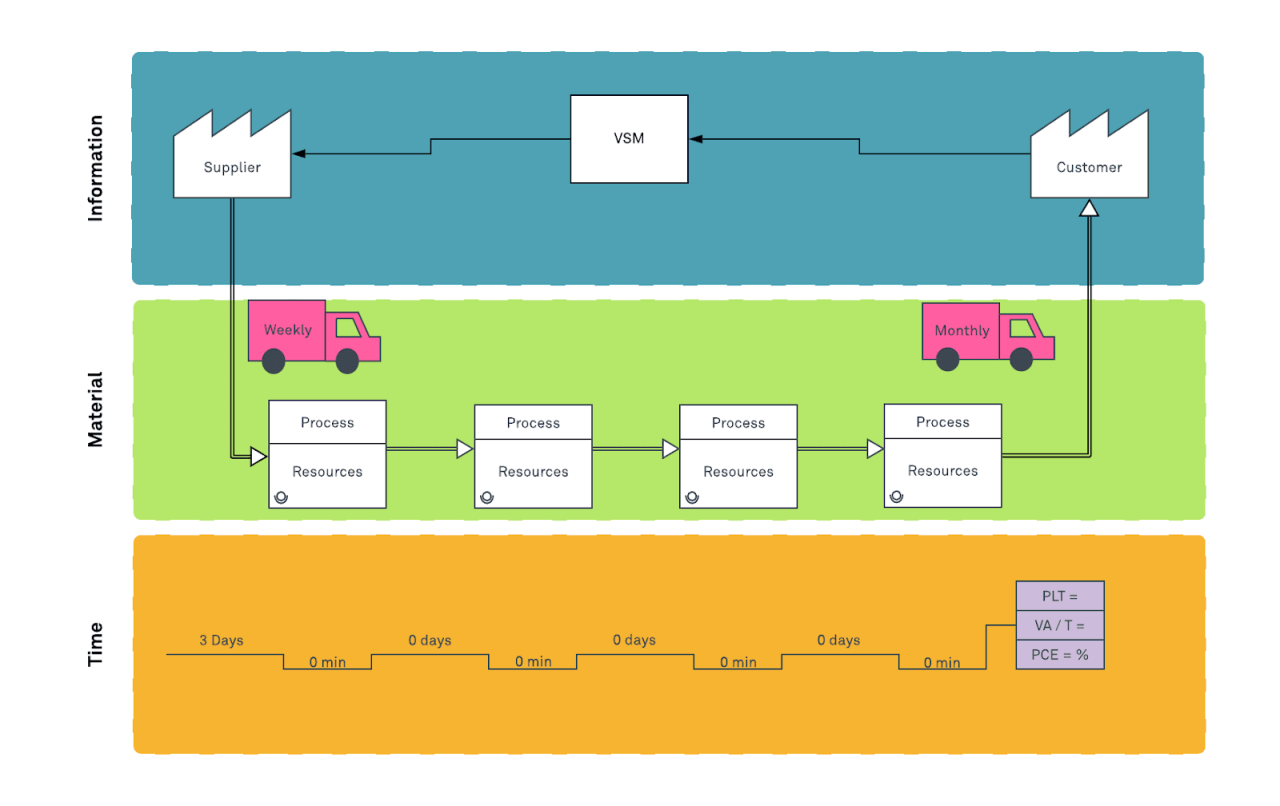
Value Stream Management (VSM) in software delivery is rapidly evolving, driven by the increasing complexity of software systems and the relentless pace of technological innovation. The next five years will witness significant advancements in VSM tools, methodologies, and integration with emerging technologies, reshaping how organizations deliver software and achieve business objectives.
VSM Tool and Technology Evolution
We can expect a significant shift towards AI-powered VSM platforms within the next five years. These platforms will leverage machine learning to automate tasks such as bottleneck identification, risk prediction, and even automated remediation of issues. Imagine a system that proactively suggests optimizations based on historical data and real-time performance indicators, minimizing manual intervention and maximizing efficiency. This will lead to more intelligent and adaptive VSM solutions, capable of handling the ever-increasing volume and complexity of data generated in modern software delivery pipelines.
Furthermore, we’ll see greater integration between VSM tools and other DevOps platforms, creating a more unified and holistic view of the software delivery process. For example, tighter integration with CI/CD pipelines will allow for automated feedback loops and continuous improvement of the value stream.
Impact of Emerging Technologies on VSM
Serverless computing and edge computing will profoundly impact VSM. Serverless architectures, by abstracting away infrastructure management, will simplify the value stream and improve scalability. VSM tools will need to adapt to visualize and manage the unique characteristics of serverless deployments, focusing on function performance, cold starts, and concurrency. Edge computing, which brings computation closer to data sources, presents both opportunities and challenges.
VSM will need to account for the distributed nature of edge deployments, providing visibility and control across geographically dispersed environments. Real-time monitoring and anomaly detection will become crucial for optimizing performance in edge-based applications. Consider a global e-commerce platform using edge computing to reduce latency. VSM will need to track performance metrics across all edge nodes, ensuring consistent user experience regardless of location.
Areas for Future Research and Development
One critical area for future research is the development of more sophisticated metrics for measuring the effectiveness of VSM initiatives. Current metrics often focus on individual stages of the value stream, failing to capture the holistic impact of VSM on overall business outcomes. Research should focus on developing comprehensive metrics that correlate VSM improvements with tangible business value, such as increased revenue, reduced time-to-market, and improved customer satisfaction.
Another key area is the application of VSM to non-traditional software development methodologies, such as agile at scale and DevOps. While VSM is often associated with traditional waterfall methodologies, its principles can be applied to a wide range of development approaches. Research is needed to adapt and refine VSM practices to optimize these diverse methodologies.
Best Practices for Adapting VSM to Complex Software Systems
Adapting VSM to increasingly complex software systems requires a focus on modularity and scalability. Breaking down the value stream into smaller, manageable modules allows for more granular analysis and optimization. This modular approach also improves resilience, as issues in one module are less likely to impact the entire system. Furthermore, adopting a microservices architecture can significantly improve the agility and scalability of the software delivery process.
VSM tools must be capable of tracking and visualizing the performance of individual microservices and their interactions, enabling efficient identification and resolution of bottlenecks. For example, a large financial institution might decompose its trading platform into independent microservices, each managed by a dedicated team. VSM will play a crucial role in ensuring seamless collaboration and efficient delivery across these teams.
Framework for Measuring ROI of VSM Implementation
A robust framework for measuring the ROI of VSM should consider both tangible and intangible benefits. Tangible benefits include reduced cycle time, lower defect rates, and improved resource utilization, all of which can be quantified and measured. Intangible benefits include improved team collaboration, increased employee morale, and enhanced customer satisfaction, which are more challenging to quantify but equally important.
A comprehensive ROI framework should utilize a balanced scorecard approach, incorporating both quantitative and qualitative metrics. The framework should also track key performance indicators (KPIs) throughout the VSM implementation process, allowing for continuous monitoring and adjustment. A simple formula could be:
ROI = (Value Created – Cost of Implementation) / Cost of Implementation
. The “Value Created” would need to be carefully calculated, considering both tangible and intangible benefits, possibly using weighted scoring based on business priorities. This framework needs regular refinement based on the specific context of the organization and the ongoing evolution of VSM practices.
Conclusion
Value Stream Management isn’t just a buzzword; it’s a fundamental shift in how we approach software development. By embracing automation, leveraging AI, and fostering a culture of collaboration, organizations can unlock unprecedented levels of efficiency and deliver exceptional value to their customers. The journey might have its bumps, but the destination – a future of faster, better, and more cost-effective software delivery – is undeniably worth the effort.
The future of software is streamlined, and VSM is leading the charge.
FAQ
What are the biggest risks associated with implementing VSM?
Resistance to change from teams accustomed to older processes, lack of executive buy-in, and insufficient data visibility are key risks. Proper planning, change management strategies, and selecting the right tools are crucial for mitigating these.
How can I measure the ROI of VSM implementation?
Track key metrics like lead time reduction, defect rates, deployment frequency, and customer satisfaction. Compare these pre- and post-VSM implementation to quantify the improvement and calculate ROI.
Is VSM only applicable to large organizations?
No, VSM principles can be adapted to organizations of all sizes. Even small teams can benefit from streamlining their workflows and improving visibility into their value streams.
What’s the difference between VSM and DevOps?
DevOps is a cultural and technical movement focused on collaboration and automation. VSM is a management methodology that helps visualize and optimize the entire software delivery process, often used
-within* a DevOps framework.
